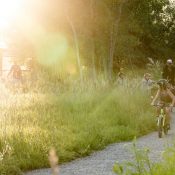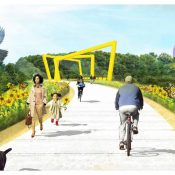Author: Claire Hempel
How to Capture the ‘Spirit of Place’ Within Designs
Using storytelling as a medium to convey the intangible meaning of a place is a powerful and effective approach that captures the essence, history, and significance of a location. While site analysis, such as GIS mapping, demographic research, or market studies, can provide a factual understanding, storytelling brings depth, emotion, and a human connection to the experience of a place. It allows users of the spaces we create and enhance to engage on a personal level, transcending mere information and statistics.
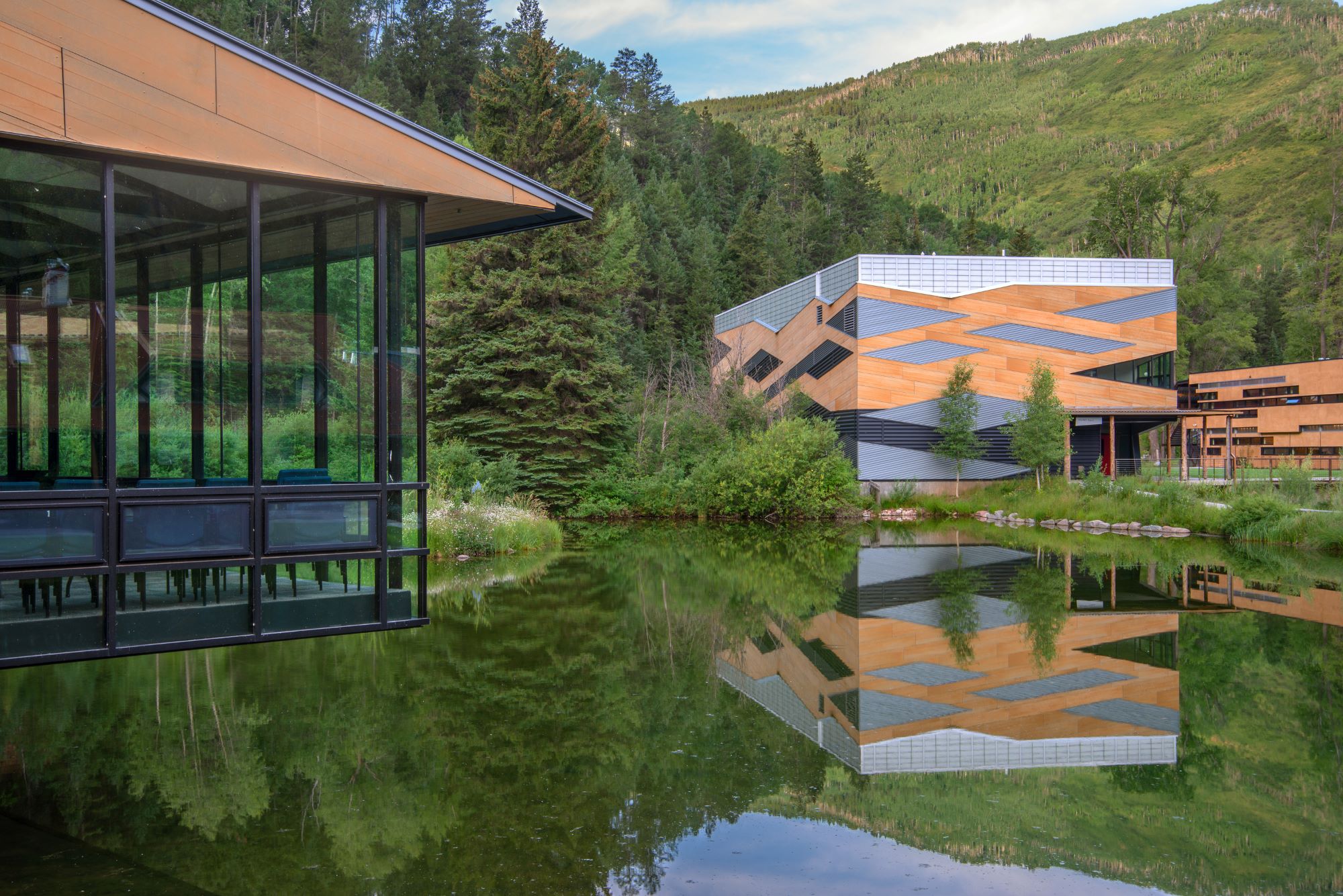
Image: Design Workshop
Here are five reasons why storytelling is a keystone to convey the intangible meaning of a place:
- Emotional Connection: Storytelling taps into the emotions of the audience – in this case, people existing in the spaces in which we create – giving them a deeper connection to the place being described. By evoking feelings, such as joy, sorrow, nostalgia, or wonder, stories help people develop a personal attachment to the location, enabling them to understand its significance beyond physical attributes.
- Cultural Context: Places are often steeped in rich cultural and historical contexts. Stories can illuminate the traditions, customs, and beliefs that shape a place’s identity, helping people grasp the intangible aspects of its culture. Through narratives, people in a landscape can explore the intangible elements like folklore, legends, and local myths, which contribute to the individuality of a place.
- Human Experience: Places are not just geographic entities; they are lived spaces where people’s lives unfold. Stories allow users of a space to step into the shoes of individuals who have shaped the place or have been influenced by it. Personal anecdotes, biographies, or fictional tales help readers empathize with the human experiences tied to the location, providing a nuanced understanding of its intangible qualities.
- Sense of Identity: Every place has its own identity and a set of values that define it. Through storytelling, readers can gain insight into the collective identity of a community or a region. By exploring narratives that highlight the struggles, achievements, or defining moments of a place, people in a space can comprehend the intangible aspects that contribute to its character and sense of pride.
- Inspiration and Engagement: Stories have a captivating power to engage readers, ignite their imagination, and inspire action. By weaving narratives that highlight the intangible allure of a place, storytelling motivates readers to explore, experience, and appreciate it firsthand. This engagement can foster a sense of stewardship and a desire to protect and preserve places with intangible significance.
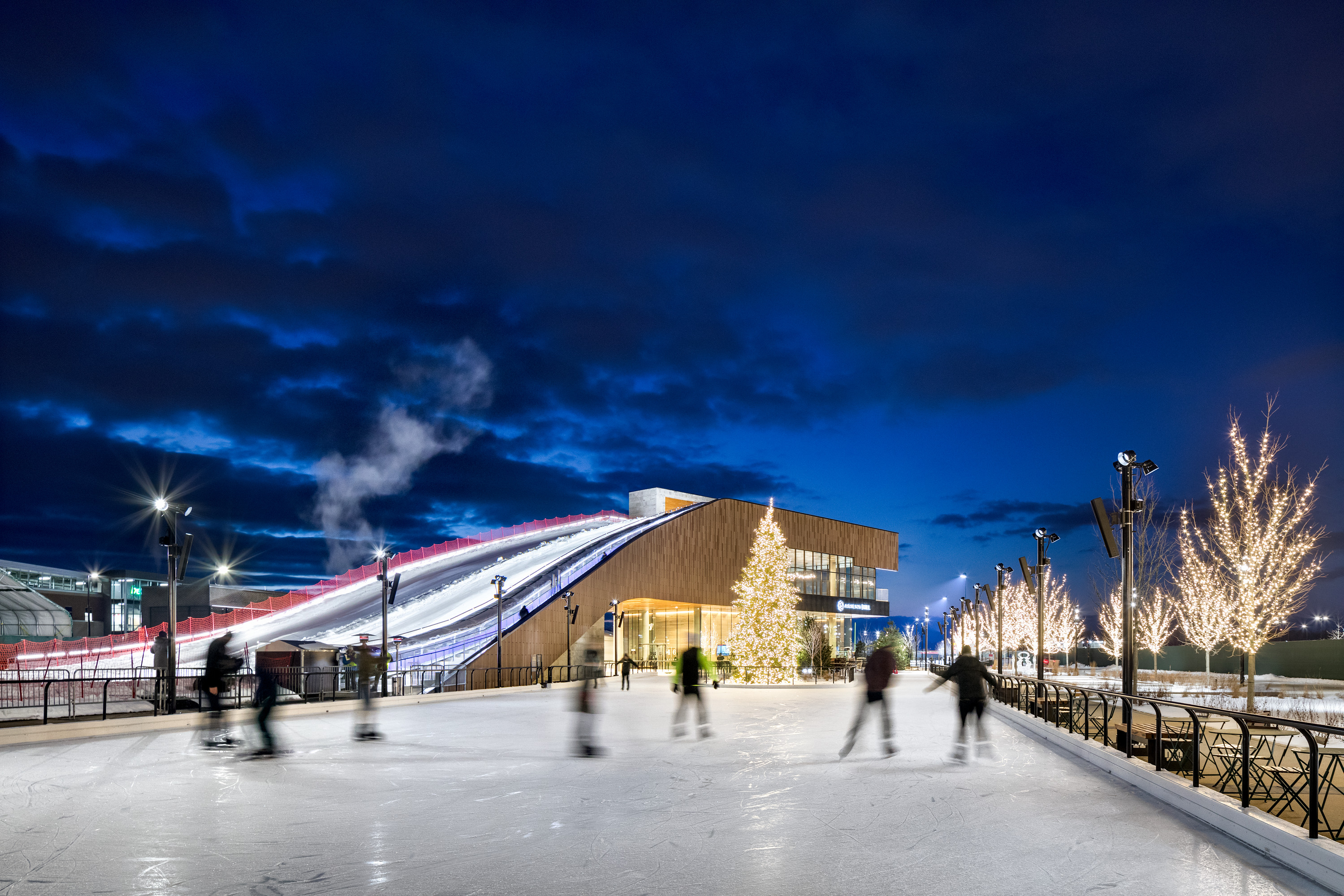
Image: Design Workshop
So how can one take the stories from a place and imbue that into its Spirit? Authentic community engagement, research, reading, imagination are all necessary tools. Here are four ways to unlock the Spirit of Place:
- Past: Understanding the history of a place and how it has evolved over time is crucial to capturing its Spirit of Place. By delving into the past, one can uncover significant events, cultural shifts, and the development of the site. For example, in the case of the Houston Arboretum and Nature Center (Houston, Texas), the Spirit of Place lies in acknowledging the historical ecological significance of the soils and its restoration after the devastation Hurricane Ike and subsequent droughts. The story of the Arboretum’s transformation from piney woods to tremendous tree loss to reincarnation as a savannah meadow reflects the resilience of nature.
- Present: To truly grasp the Spirit of Place, one must understand the current state of affairs, key issues, and driving forces shaping the location. This involves recognizing the social, economic, and environmental conditions that influence the site in the present moment. An example that resonates in this context is the High Line Park in New York City. By repurposing an elevated railway track into a vibrant public space, the High Line embodies the present spirit of urban revitalization, sustainability, and community engagement.
- Theories/Methodology: This aspect focuses on how the story of a place is conveyed to others, encouraging them to evaluate alternatives and envision desired outcomes. It involves selecting appropriate methodologies and theories to effectively communicate the intangible qualities of the location. The work of Jane Jacobs, an urban activist and writer, exemplifies this aspect. Her book “The Death and Life of Great American Cities” presents a theory of urban planning that emphasizes the importance of mixed-use neighborhoods, pedestrian-friendly streets, and community participation. Jacobs’ methodology of storytelling and advocacy for human-scale urban environments has influenced urban planning practices worldwide.
- Future: The future aspect of the Spirit of Place involves envisioning the potential outcomes or the desired future state of a site. It aims to foster a sense of ownership and inspire people to take responsibility for the preservation and development of the place. The concept of “placemaking” aligns with this aspect, emphasizing community involvement in shaping public spaces. The Midtown Park project in Houston, Texas was once a surface parking lot and vacant commercial spaces. Understanding the needs of the community regarding open spaces and wanting to reconnect the Midtown District to the Bayou, represents a future where unused urban spaces can be transformed into green, accessible areas that enhance the quality of life for residents and visitors.
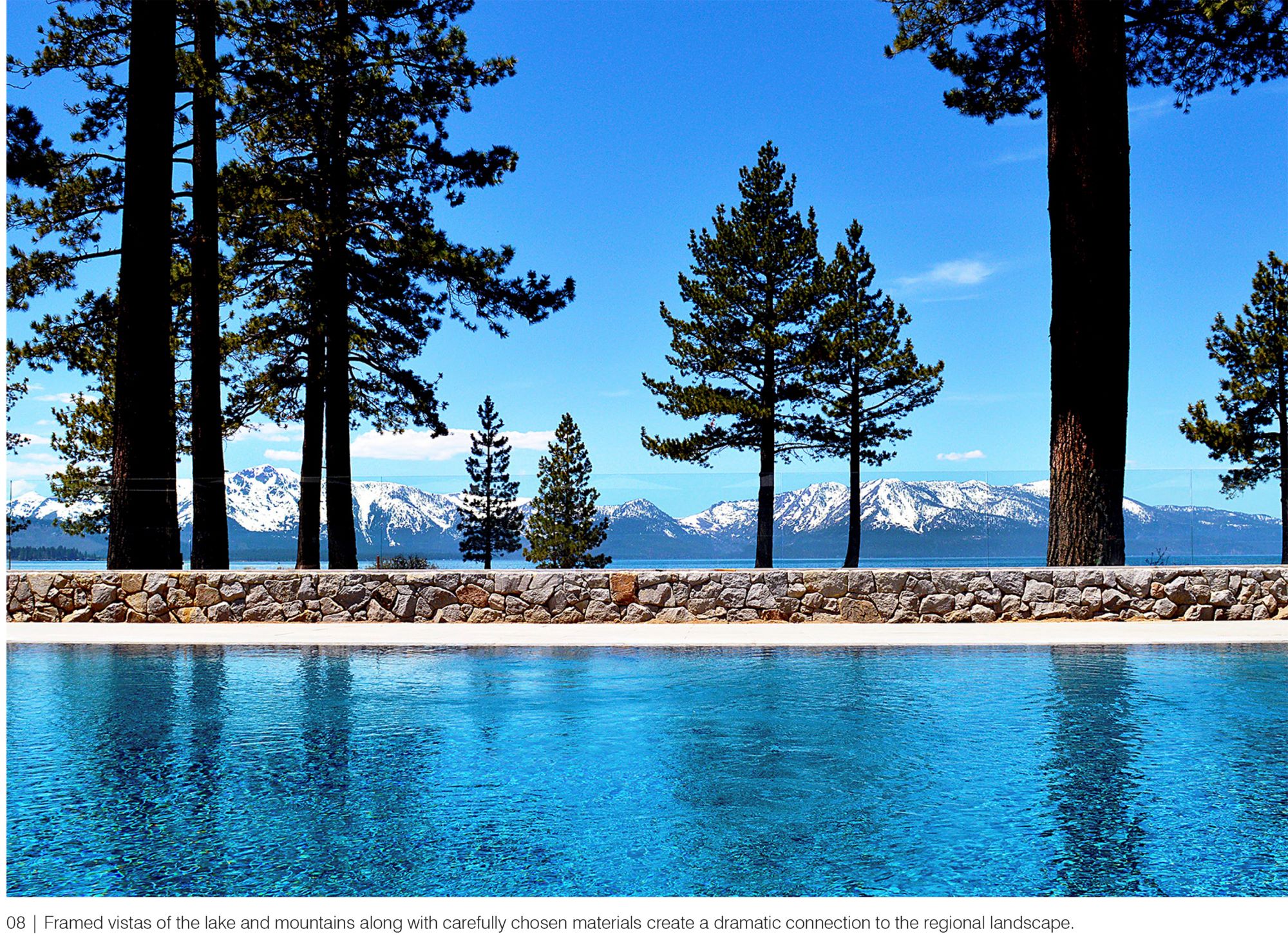
Image: Design Workshop
In summary, finding the Spirit of Place is essential to the success of design as it allows designers to create spaces that are authentic, enhance user experience, foster sustainability, encourage community engagement, and leave lasting legacies. By embracing the intangible qualities of a location through storytelling and deep exploration, design becomes a powerful medium for connecting people with their surroundings and shaping meaningful environments.
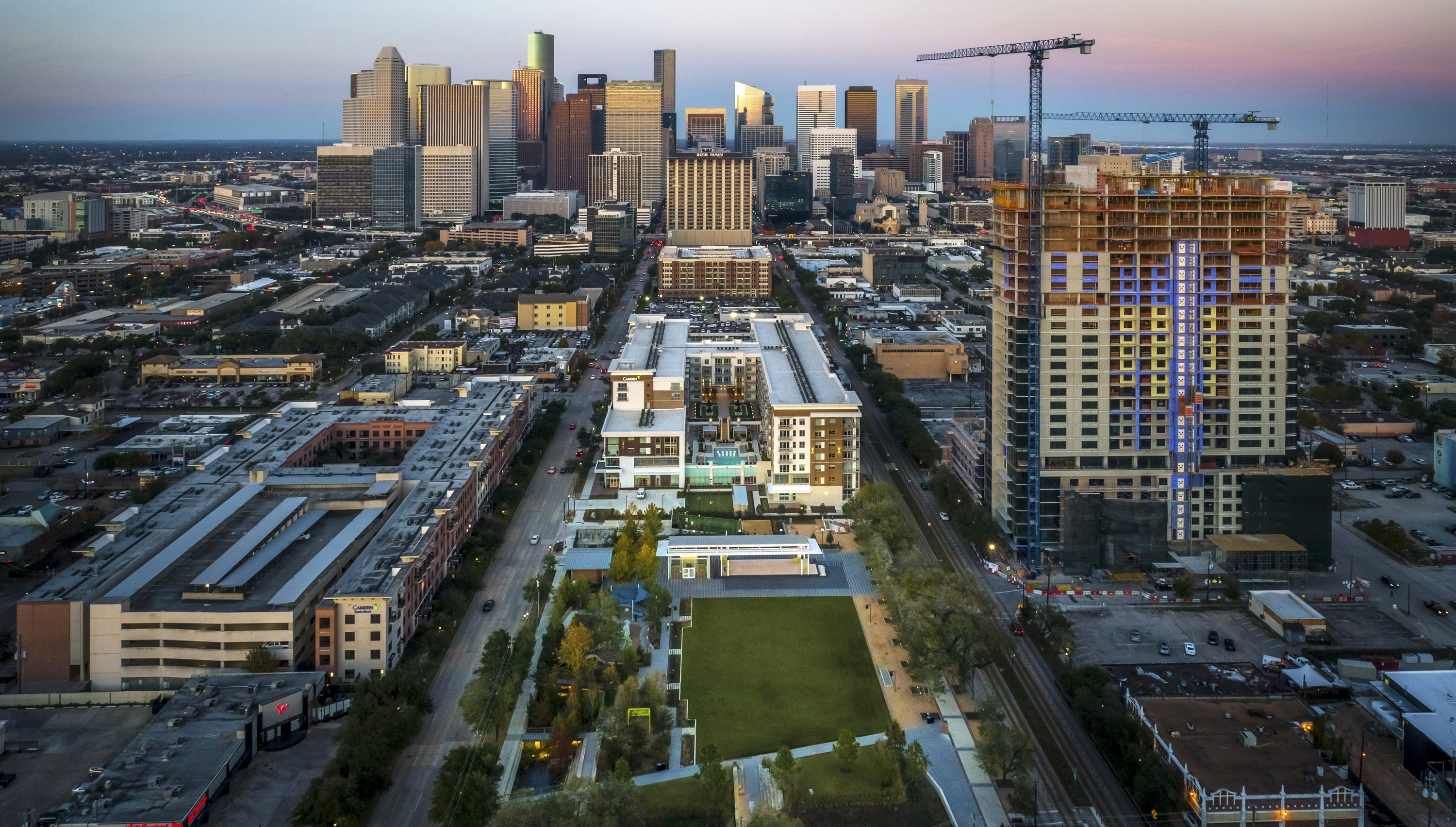
Image: Design Workshop
Urban Infrastructure is Key to Austin’s Growth
Austin consistently ranks at the top of ‘most desirable’ and ‘best place to live’ lists. With the city’s unflappable job market, the migration of corporations relocating to Texas, and the desirable quality of life that is provided by the amenities the city has, it’s no wonder that the population has skyrocketed in the past several decades. An average of 180 residents arrives daily – even during the Covid-19 pandemic.
With this kind of growth, there is incredible pressure on the housing market, both for sale and for rent. Houses and apartments are in short supply, and this leads to increased housing costs across the region. Home buyers are seeking affordable homes as far as 60 miles from the city. So, when a homeowner that lives 45 minutes or farther from their job in the core of the city, there is a growing pressure on the infrastructure needed for someone to access a job from a location where they can afford a home. All that time traveling in a car decreases quality of life. This begs the question: Is existing urban infrastructure able to withstand this boom? Below are some strategies that Austin will need to implement in order to grow in a more sustainable, healthy manner.
First, people are not just moving into the core of Austin. The salaries needed to afford an apartment, condo or single-family house in the area are unachievable for those making the median family income. This is what is driving the growth of Austin’s suburbs – searching for housing that is more affordable. Downtown is no longer the only place to do business – job centers are growing throughout the region. The pandemic and the world’s shift to flexible working, remote working and working from home has opened a world of possibilities for where people live and where they work.
Planned communities today are incredibly more comprehensive than they were just 10 years ago. The bedroom communities of the past are now expected to have more than just housing. Successful planned communities are a mix of uses, including retail, office, and even institutional uses. For planned communities that are growing on the outskirts of the city, they need to think about equitable multi-modal access, even if that component of the community will be built in the distant future. Northline is a 100-acre development under construction now in Leander, Texas, a suburb of Austin. This mixed-use community will feature different housing types, civic spaces, and commercial areas. One of the elements that sets this community apart is its proximity to the light rail line, meaning that if residents need to get to downtown, they can take the trail instead of their car.
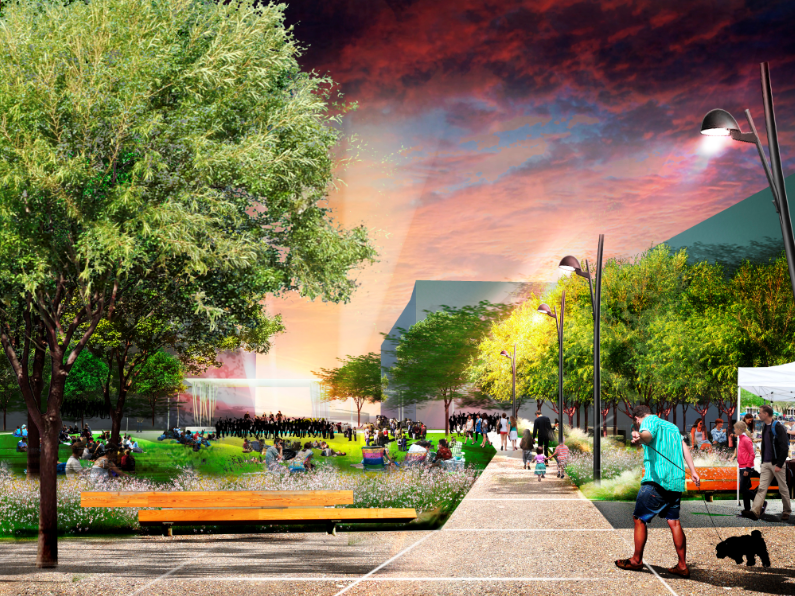
The newest extension of the Beltline will be not only a recreational amenity but also create a multi-modal transportation corridor. (Image: Design Workshop and Alta)
Something else to be taken into consideration is the industry shift from suburban office parks – typically large areas of singular buildings where people only work and then go home – to a more comprehensive collection of uses for not only the tenants and their employees, but for the public to enjoy. New and redeveloping office campuses are working to provide their employees better outdoor connectivity between buildings, adding land uses in the same development which include large public parks and residential.
Mobility and the needed infrastructure to make a complete system is critical for a growing population. People should have the choice of how they get around town, whether by bike, bus, light rail, ride share or other. Communities that have historically depended on single occupancy vehicles to get between destination points need to think beyond the highway for how people can get to where they need to go. Trail infrastructure can be used not only for recreational riding and walking, but also for people to move around with minimal to no car interaction. The Atlanta Beltline is an incredible built example of an investment in this type of infrastructure. Design Workshop is on the team working on a vital missing piece of the system, and upon completion, the loop around the core of the city will be nearly complete.
By incorporating affordable housing, planned communities with multi-modal access and growing office campuses that accommodate many amenities in a growing urban city, Austin can continue to grow in a healthy way. City leaders and urban planners need to be strategic about the plans they are implementing now to make sure they are capable of withstanding growth that will be sustainable for 20, 30 to 50 years to come.
—
Lead Image: Design Workshop, Northline; Northline’s civic spaces contribute to the atmosphere of a complete community.
Login
Lost Password
Register
Follow the steps to reset your password. It may be the same as your old one.



